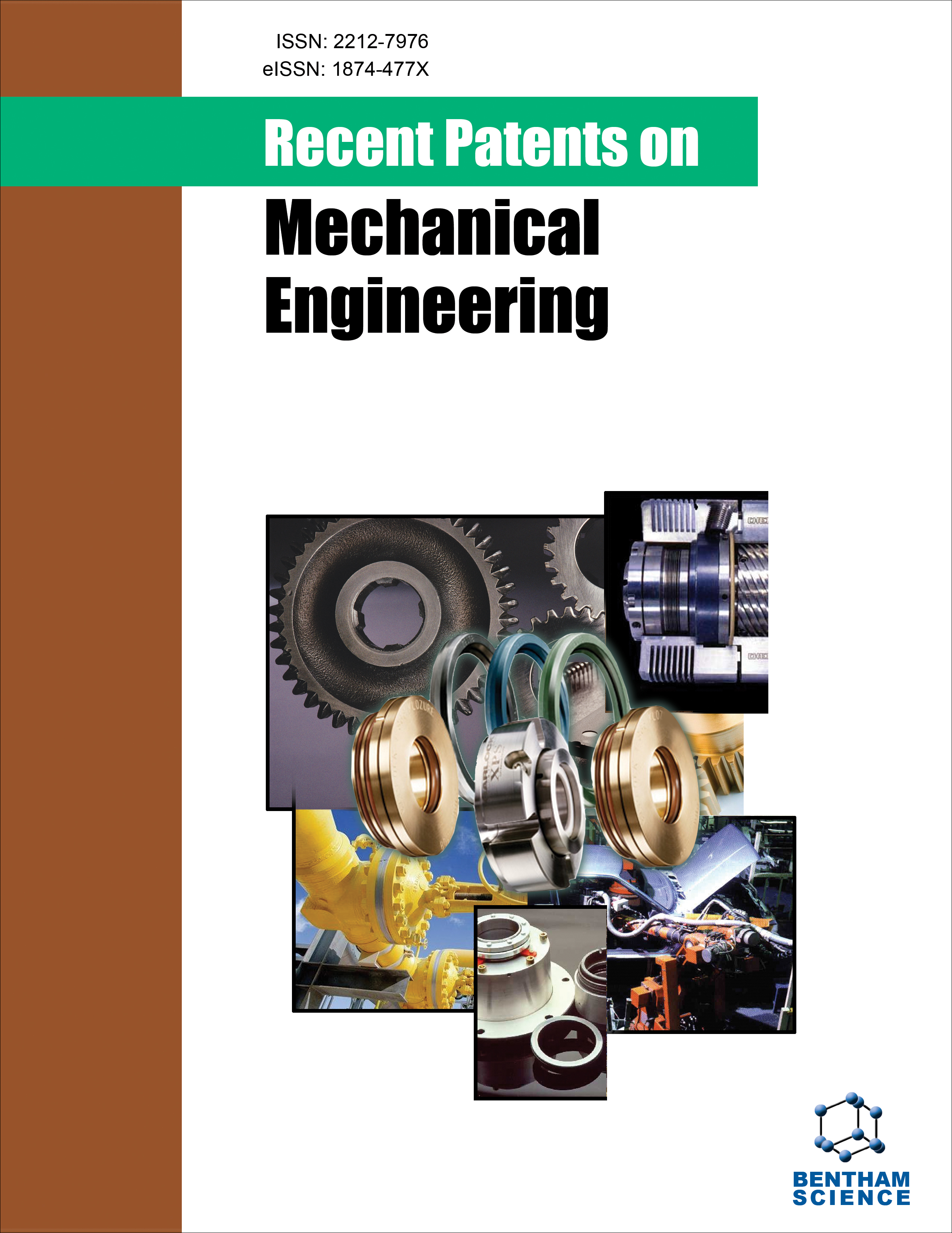Recent Patents on Mechanical Engineering - Current Issue
Volume 17, Issue 5, 2024
-
-
Energy Consumption Optimization for the Cold Source System of a Hospital in Shanghai-Part I: Analysis of Operating Characteristics and the Control Strategies of the Chillers
More LessAuthors: Minglu Qu, Xiang Luo, Xinlin Zhang, Xufeng Yan, Zhao Li and Lihui WangBackground: Hospitals account for the most proportion of energy consumption in the public building sector. Chillers usually account for most of the overall energy consumption of the cold source system. Objective: To solve the problem of chillers' large energy consumption problem, novel technologies were developed, and achievements were patented. Methods: The operating characteristics influencing factors of the magn Read More
-
-
-
High-frequency Resonance Suppression of Railway Traction Power Supply System Based on the Combination of Single-tuned and C-type Filters
More LessAuthors: Haigang Zhang, Ming Yin, Haoqiang Zhou, Song Zeng, Zizhuo Wang, Junpeng Xu, Bulai Wang and Jinbai ZouBackground: Railroad transportation in the actual operation process, there are also many dangerous accidents caused by resonance, which greatly affect the safety of railroad transportation. A comprehensive examination of the operational dynamics within the power branch of a traction substation is imperative for sustaining system equilibrium. Discrepancies between these facets pose a potential threat to the safety of ra Read More
-
-
-
Cutting Finite Element Simulation of Quenched Steel GCr15 Based on ABAQUS
More LessAuthors: Lin Yang, Junhao Gong, Jialiang Liu, Jianqiu Xia and Yu ZhangBackground: The substantial cutting force and elevated cutting temperature during the machining of hardened steel GCr15 exacerbate tool wear. Objective: In this study, the influence of cutting parameters on cutting force and cutting temperature in the process of hard-cutting GCr15 was studied, the cutting parameters were optimized, and the cutting force and cutting temperature were predicted. Methods: The cutting si Read More
-
-
-
Simulation of the Die and Punch Behavior During the Compaction Process of Alumina-Based Matrix Composite Using Finite Element Analysis
More LessAuthors: Ameen Al Njjar, Kamar Mazloum and Amit SataBackground: Compaction in the powder metallurgy process typically involves using a die and punch, applying high pressure to mixed powder to achieve product quality, such as geometry, density, and porosity. This step is critical in the powder metallurgy process. Objective: This study aims to systematically design and manufacture a die and punch for compacting an Alumina-based matrix composite. Specimens were selected Read More
-
-
-
A Digital Image Method for Calculating the Working Chamber Volume of a Combined Profile Scroll Compressor
More LessAuthors: Zhixiang Liao, Bin Peng, Pengcheng Zhang, Jian Sun and Bingguo ZhuBackground: The efficient and accurate calculation of working chamber volume can greatly contribute to the optimized design efficiency of the combined profile scroll compressor, but current papers and patents lack research on the method of calculating the working chamber volume of a combined profile scroll compressor. Objective: A method of using digital image processing is proposed to efficiently calculate the workin Read More
-
-
-
Modal Analysis and Optimization of Fluid-Structure Coupling for Rotor and Inner Cylinder of Vertical Condensate Pump
More LessAuthors: Xiaofeng He, Xiaofeng Liu, Yunxiang Ma, Chengbin Lu, Yang Wu and Zhongfu NieBackground: Low-frequency resonance is one of the common issues encountered during the variable-frequency operation of condensate water pumps. There have been numerous patents and papers proposing solutions to address the low-frequency resonance problem in condensate water pumps. However, the solutions for resonance problems often need to be tailored to specific circumstances. Methods: Based on the acou Read More
-
Most Read This Month Most Read RSS feed
Article
content/journals/meng
Journal
10
5
false
en


